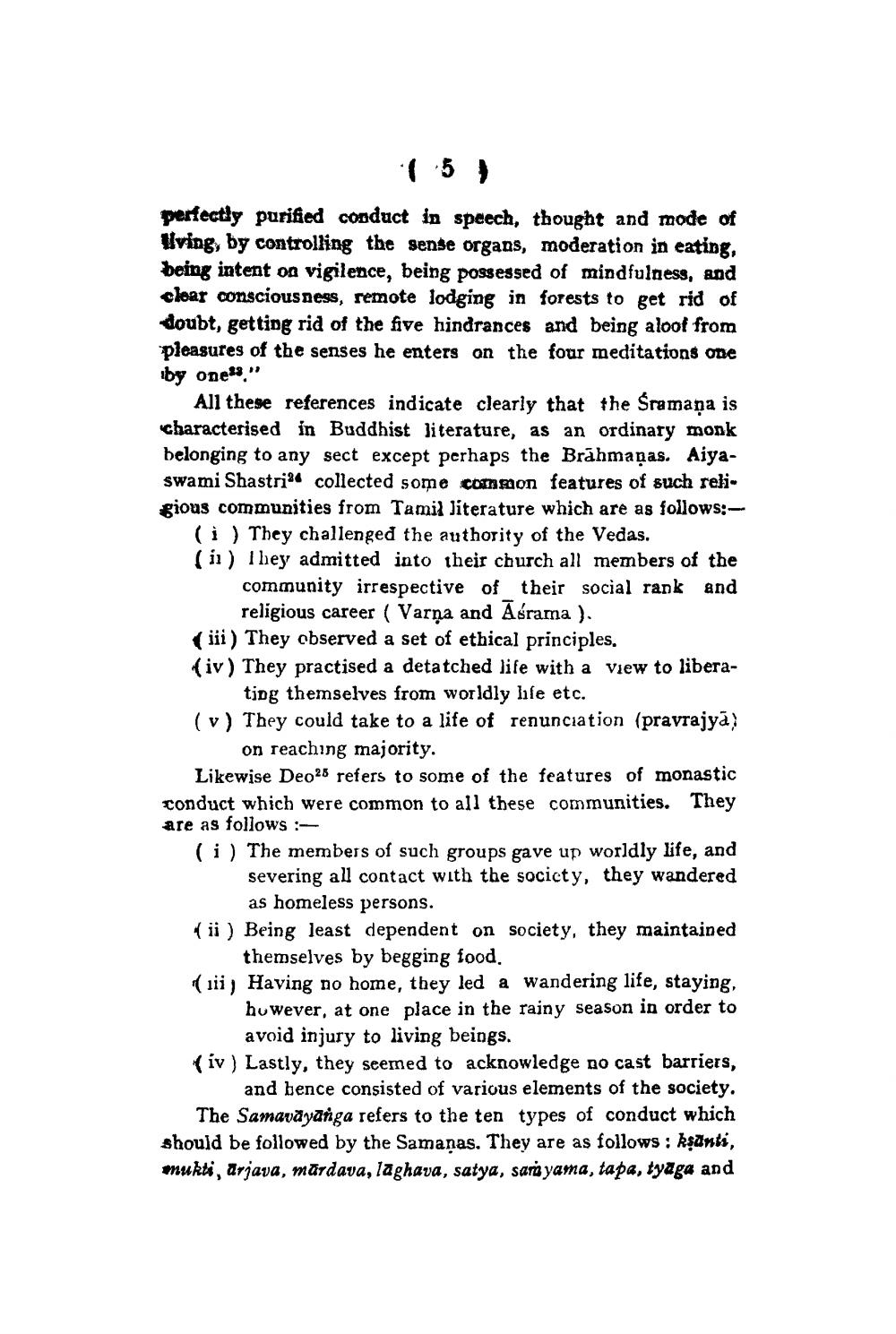________________
perfectly purified conduct in speech, thought and mode of Uving, by controlling the sense organs, moderation in eating, being intent on vigilence, being possessed of mindfulness, and cloar consciousness, remote lodging in forests to get rid of doubt, getting rid of the five hindrances and being aloof from pleasures of the senses he enters on the four meditations one by one."
All these references indicate clearly that the Sramana is characterised in Buddhist literature, as an ordinary monk belonging to any sect except perhaps the Brāhmaṇas. Aiyaswami Shastria4 collected some common features of such religious communities from Tamil literature which are as follows:
(i) They challenged the authority of the Vedas. (ii) They admitted into their church all members of the
community irrespective of their social rank and
religious career (Varna and Asrama ). (iii) They observed a set of ethical principles, (iv) They practised a detatched life with a view to libera
ting themselves from worldly hfe etc. (v) They could take to a life of renunciation (pravrajyā)
on reaching majority. Likewise Deo28 refers to some of the features of monastic conduct which were common to all these communities. They are as follows: (i) The members of such groups gave up worldly life, and
severing all contact with the society, they wandered
as homeless persons. (ii) Being least dependent on society, they maintained
themselves by begging food. (iii) Having no home, they led a wandering life, staying,
huwever, at one place in the rainy season in order to
avoid injury to living beings. (iv) Lastly, they seemed to acknowledge no cast barriers,
and hence consisted of various elements of the society, The Samavāyanga refers to the ten types of conduct which should be followed by the Samanas. They are as follows: kşanti, mukti, arjava, mārdava, laghava, satya, sarayama, tapa, tyaga and




